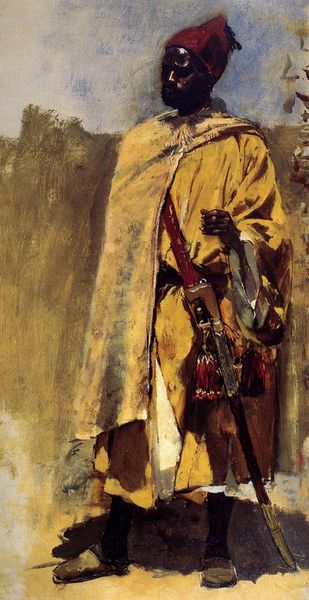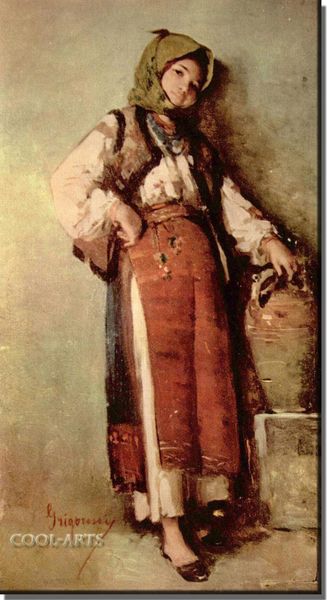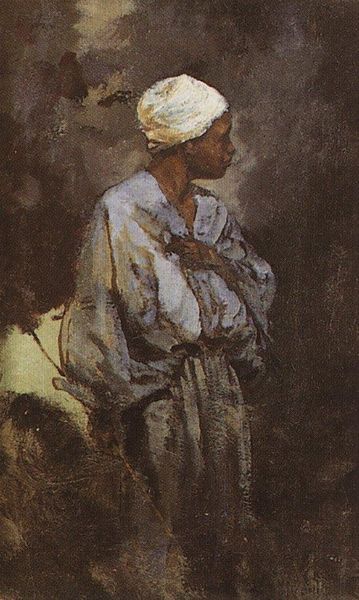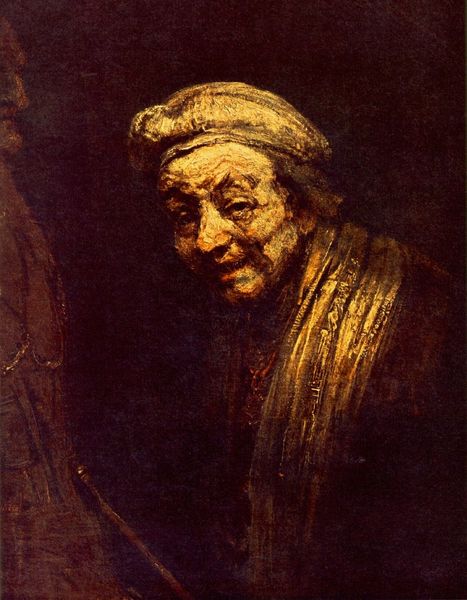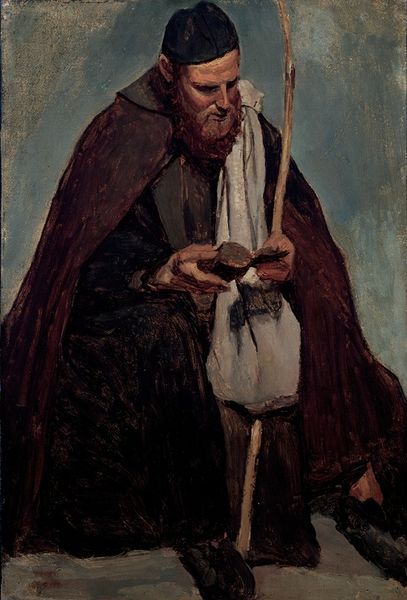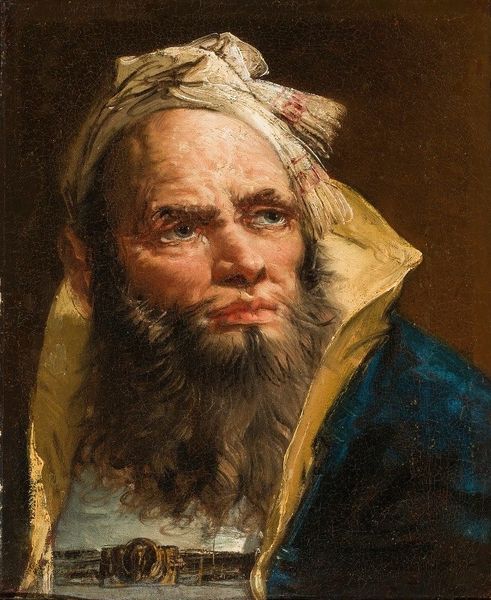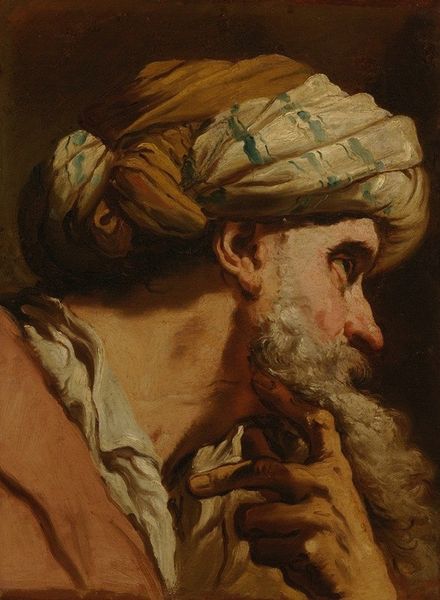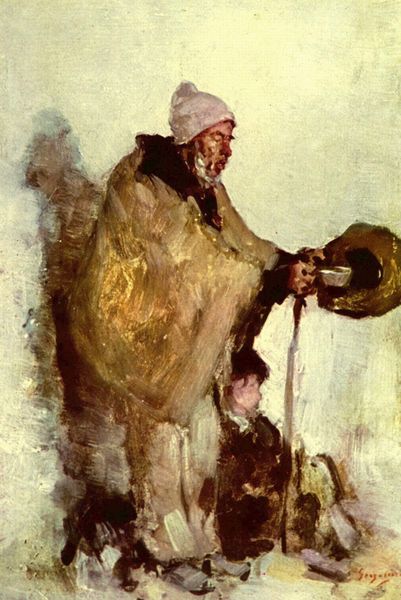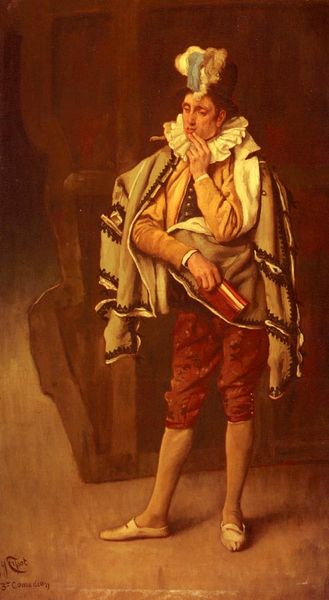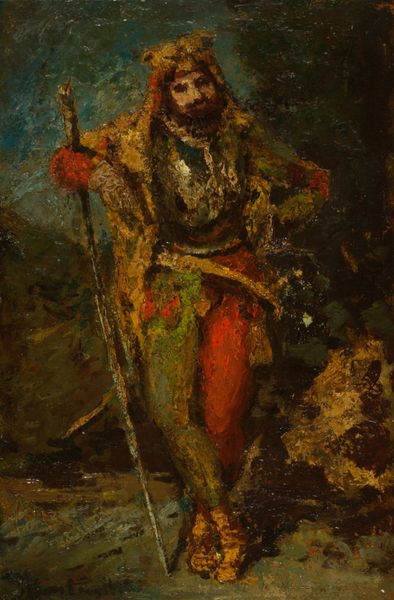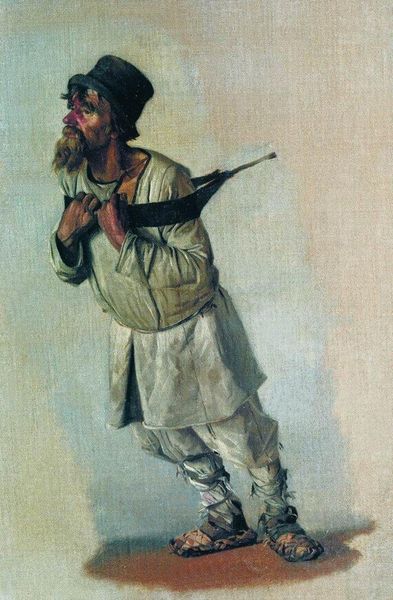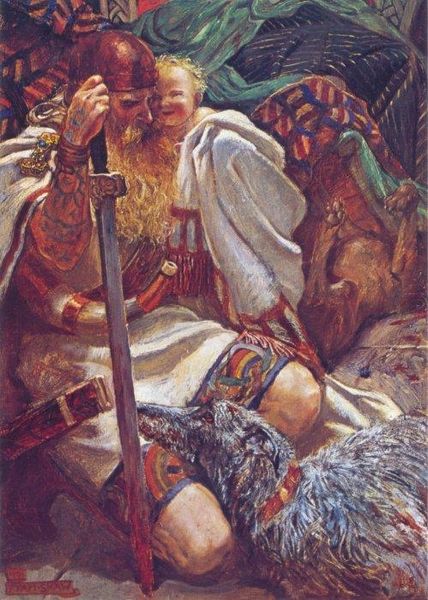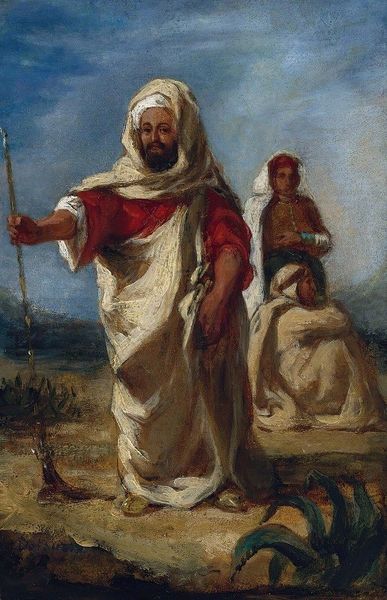
oil-paint
#
portrait
#
narrative-art
#
oil-paint
#
figuration
#
oil painting
#
romanticism
#
history-painting
Copyright: Public domain
Curator: Here we have Jan Matejko’s historical portrait of Tugai Bey. The painting uses oil on canvas and strikes me as unfinished. Editor: My immediate impression? He looks...haunted. There’s a dark intensity, almost a desperation, in the upward gaze. It’s pulling me right in. Is that a feathered headdress? Very theatrical. Curator: Indeed. This portrayal is part of a Romantic reimagining of history. Tugai Bey, a Crimean Tatar military leader, is often remembered for his role in the battles against Poland in the mid-17th century. Note the ornate, perhaps symbolic details embedded within the braids framing his face. Editor: Ah, yes, those metallic embellishments dangling amidst the braids certainly whisper "status" and, perhaps, power. And the quiver of arrows just visible at his shoulder—ready for action, yet there’s that melancholic air...it's a compelling tension. But who is that leering back there? Is that supposed to be Bohdan Khmelnytskyi? Curator: Interpretations vary. Matejko was renowned for taking liberties with historical accuracy. Khmelnytsky is one popular reading but it seems to be a much darker portrayal than most, perhaps even demonizing Tugai Bey’s alliances. Editor: So it is likely less portrait and more a dramatic statement—a legend painted with loaded symbols and shadowed faces, intended to evoke both admiration and dread. Curator: Precisely. And his Romantic style amplified emotional intensity. We must remember his goal was not to be historically scrupulous, but rather to rouse national feeling. Look how skillfully Matejko deploys dramatic lighting to focus the eye upwards towards that fraught expression, almost daring the viewer to share that burden. Editor: Matejko isn’t just painting history; he's staging it. The visual language is very striking here! What stays with me is how he’s captured a soul in turmoil. Tugai Bey might be a military leader, a historical figure, but Matejko shows him at a breaking point. Curator: Agreed. He represents the ambiguities within any period of great conflict, even, perhaps, as we view history through present-day sensibilities. Editor: Definitely leaves you with a lot to ponder, doesn’t it? Makes me want to grab a coffee and delve deeper. Curator: As does art when it is at its finest. Shall we?
Comments
No comments
Be the first to comment and join the conversation on the ultimate creative platform.
